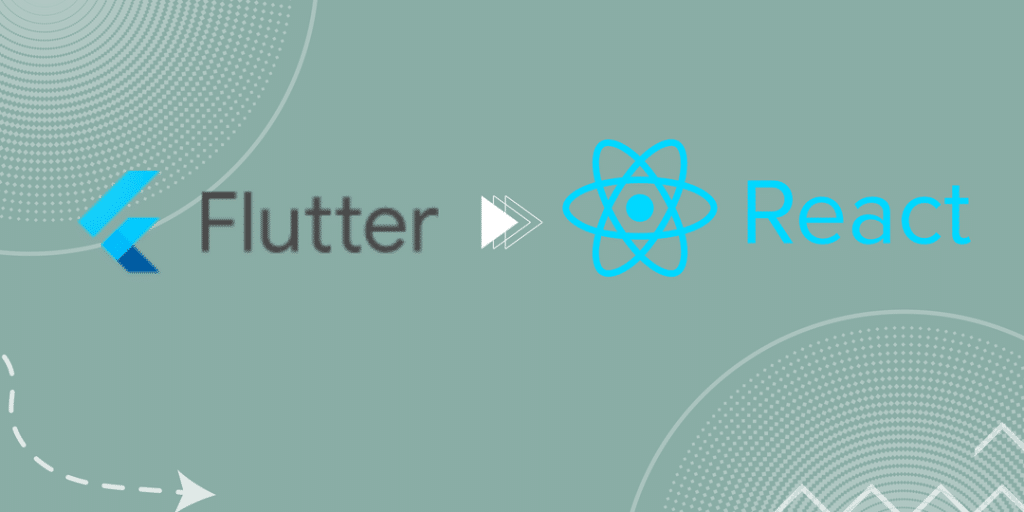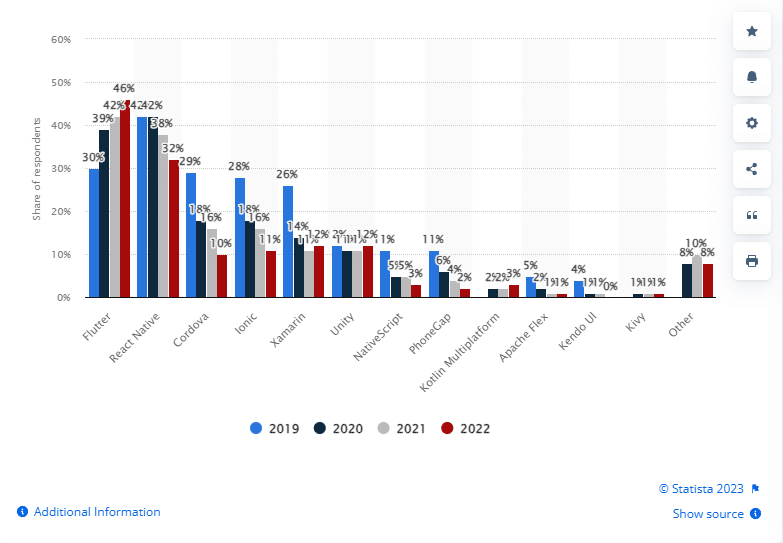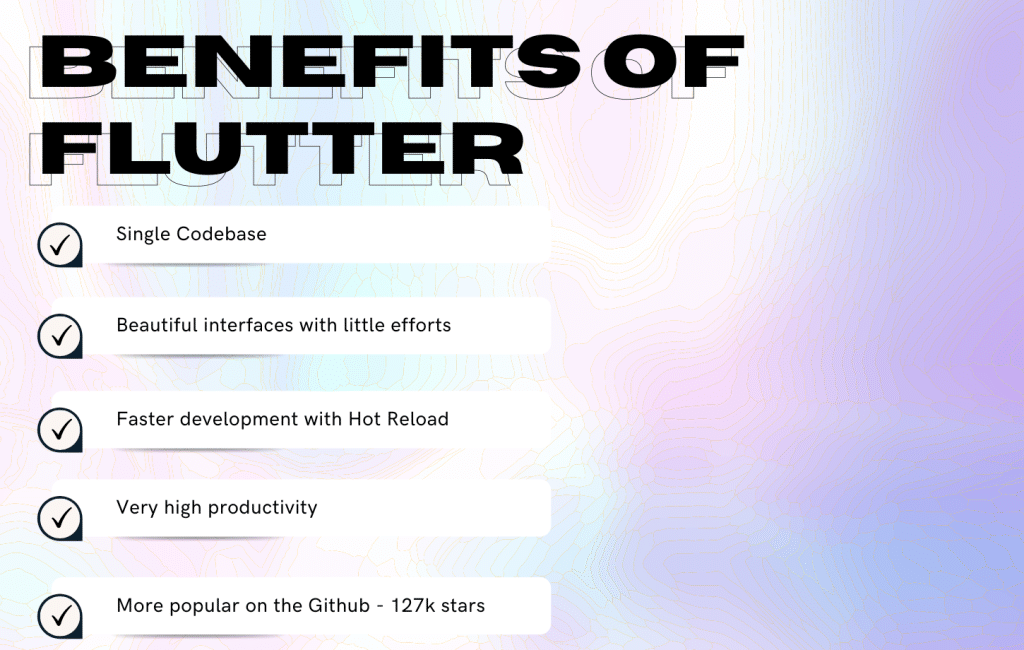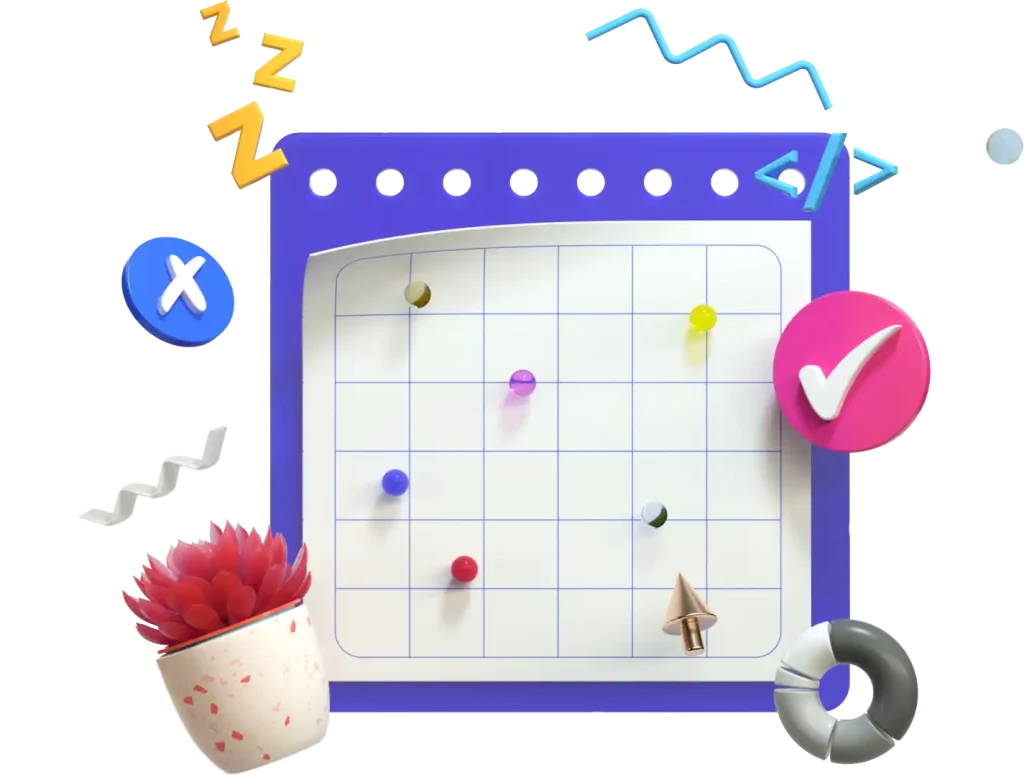
Flutter vs React Native: Which is the Best for Mobile App Development in 2023? (Latest Updated)
MasterClass
13/08/2023
Recent News
Try Our Services
For more informations about our training programs contact us :
- Tunis, Denden
- (+216) 94 08 20 32
- contact@master-class.tn
Categories
React Native and Google Flutter are both cross-platform development frameworks that can be used for developing mobile apps. Which one should you choose in 2023? Compare the features and decide what’s best for you.

We have already covered 8 exact steps you need to take over once you decide to build an app, so now it’s time to spotlight one of the most important parts of the business – choosing the right tech stack.
It is remarkably important to select the right framework for the job when it comes to software development. Otherwise, the productivity and the sets of requirements may not align properly, causing problems in the long run. Poorly designed software will most certainly contain an overwhelming number of bugs, have performance issues and will not be scalable.
There are two development frameworks to choose from: native and cross-platform development frameworks.
However, there are some trade-offs to consider. The trade-offs between native and cross-platform development relate to project duration, available resources and performance requirements. Cross-platform frameworks are generally highly productive and ideal for small teams.
In this article we’re mostly going to compare Google Flutter and React Native, two of the most popular cross-platform development frameworks, and figure out which one is better. But first, let’s take a look at how one should approach the choice between native and cross-platform frameworks.
Which one should you choose: Cross-platform or Native development?
1. Native frameworks
Native frameworks are designed for specific platforms. They are highly efficient performers in most cases. However If we want to develop our applications for several platforms, then using native frameworks will increase the project duration and the resource management cost.
For example: if we want to develop one application for Android and iOS, then we will need two individual teams to develop the app. Also, depending on the platform, the architecture and other [design] considerations will vary. Hence fixing a bug or adding new features will also take twice as long and cost twice as much. This is where cross-platform frameworks come into play.
2. Cross-platform frameworks
Cross-platform frameworks allow developers to target a larger audience within a significantly shorter duration, and from a shorter codebase. Unlike native platforms, cross-platform frameworks only require one team of developers. Also, fixing bugs and deploying the builds will have less money and cost requirements. And some of the cross-platform frameworks are very performant.
Also, cross-platform frameworks are typically more modern and introduce a higher level of abstraction so even if you plan to develop an app targeting a single platform, for example, IOS, you may choose to use a cross platform framework, solely from that perspective.
Cross-platform mobile frameworks used by software developers worldwide from 2019 to 2022

To summarise, cross-platform frameworks are the ideal solution for targeting several platforms within a short time and with a small development team.. With the exception of a few isolated edge cases, it is usually the best option.
Overview of the Flutter and React Native Frameworks
What is Flutter?
Flutter SDK is a modern front-end framework that uses Dart programming language. Dart is a fantastic programming language with a lot of current language features and supports OOP. Both the language and the framework are backed up by tech giant, Google.
Flutter is open-source and is ranked as one of the most popular frameworks. It currently supports platforms such as mobile, desktop, web, linx, mac OSx, windows and embedded. Interestingly, developers can build apps for all these platforms from a single codebase.
Top 3 apps created using Flutter Framework:
What is React Native?
React Native is another UI development framework, based on ReactJS. It is backed by another tech giant, Facebook. React Native is also an open-source project with one of the most popular open-source repositories on GitHub.The programming language used by React Native javascript, which is also extensively utilized (source https://reactnative.dev).
Top 3 apps built with React Native Framework:
In the next section of the article we will give you a precise comparison of both frameworks in terms of performance, development, and support.
Flutter vs React Native: Performance Comparison
For the platforms, React Native uses native components and uses a ‘bridge’ to exchange data within the components. Basically, the bridge serves as a communication conduit between Javascript and the device’s native components. This added layer of communication increases the time cost and consumes more resources.
On the other hand, Flutter compiles code into native code, which runs faster and is on par with the native framework’s performance. This feature allows Flutter to consume less device resources resulting in better performance and faster startup of the apps.
Flutter uses the Skia graphics rendering engine to render components on the screen enabling it to run animations at 60fps with very simple codes and without any additional library.
For example, if you want to do a Hero animation in React Native you will need to install a 3rd party library. With so many libraries serving the same purpose, It is very easy to get confused. This task is fairly difficult even with the most popular library. You will need to import a number of elements from the library which will take about 4-5 steps.
However, in Flutter, all you will have to do is use the out-of-the-box Hero widget and assign the same key to all the widgets that should animate, which is a one-step process. Flutter is, therefore, incredibly developer-friendly and provides a lot of out-of-the-box solutions that you won’t have to think about.
Based on this, Flutter performs better than React Native.
Essentially, javascript has “script” in its name since it evolved organically from a scripting language inside of the browser that was never intended for building software systems. Dart, on the other hand, was designed with this in mind.
Considering type safety, then Javascript supports both dynamic and duck typing, allowing the developer to type any code and Javascript. The errors can only be discovered during the runtimeWhich is why the developer is more likely to write bad codes.
On the other hand, Dart supports both loose and strong prototyping through which the developers will encounter most of the errors during the compilation time.
Therefore, Dart is a more type-safe language than Javascript.
Making projects written in Dart more manageable and scalable. Also, in terms of speed, Dart is benchmarked to be almost twice as fast as Javascript. Dart allows both JIT and AOT compilation. JIT compilation leads to faster development with hot stateful reloads and AOT compilation helps to optimize the application during release builds. This is how exactly Flutter generates builds during the development and release period. Learning Javascript is easy but mastering it will take some time and effort.
However, anyone with an OOP background can start working on Dart pretty quickly. Dart has great documentation, and is more predictable than Javascript thus, learning and mastering it is easier than Javascript.
Flutter vs React Native: Development
React Native is a highly productive framework. It utilizes Javascript and CSS to implement UI components. Also, Javascript developers are more readily available . Since React Native is much older than Flutter, it has a bigger and more mature community than Flutter.
The React Native community provides a lot of ready-made UI components which can easily be used in the projects. It supports Hot-reload, which is a lifesaver for developers, since they can see real-time code changes with a visual. Hence, the development process is quite robust.
Flutter uses Dart as the programming language and given thatDart is less popular than Javascript, it is harder to find Flutter developers. Flutter also supports hot reload, which also holds the state, referred to as Stateful hot reload.
Stateful hot reload is much faster than React Native’s Hot-reload and making [Flutter] even better.
Although React Native has a larger community, Flutter’s documentation is significantly better than React Native’s. Furthermore, Flutter makes using Theme for Android and iOS much easier and uses the Skia engine to render the components ensuring that they look the same on each platform.
Flutter also offers platform-specific components as Material Components and Cupertino Components for centered applications for Android and iOS respectively . Flutter also offers outstanding debugging tools that are much more effective in finding bugs in the code compared to Dart.
Since React Native uses native components from the platform, developers won’t need to make any alterations to the components following the deployment of newer OS versions.
On the other hand, Flutter developers will have to make the necessary changes to support new looks for the components across different OS versions. For these reasons, React Native is a preferable solution if the project requires various designs for different platforms and automatically updates components based on the OS version.
Otherwise, Flutter is more productive and easier to develop due to better documentation and faster hot reload
Flutter vs React Native: Community Support
Flutter SDK is much younger than React Native. Furthermore, React Native has garnered much more IDE support, while only a handful of IDEs support Flutter.
React Native’s older larger community has developed extensive packages and libraries. However a lot of them were discontinued by the author or were not updated recently making them challenging to use. Additionally, deciding which of the related libraries is superior can be difficult at times.
Flutter SDK is only four years old, while React Native is six b to better support from Google engineers, Flutter SDK has much better documentation (and excellent video tutorials too!). It also provides a limited amount of up-to-date, ready-to-use components and packages for developers.
So out-of-the-box Flutter offers more features, while React Native requires users to go through the libraries and find the best one. Furthermore, connecting to multiple 3rd party libraries might become incompatible and cumbersome.
Final thoughts: what technology to choose in 2023?
React Native is a good choice for projects with simple functionality. If you have an established business and mobile application is not your main focus, then React Native can help you to build native-looking applications for a variety of platforms faster.
The Flutter framework is better suited for projects that require complex animations and functionalities, building and testing your market demand and fit, Flutter would be the best choice.

Let's Subscribe



5 Responses